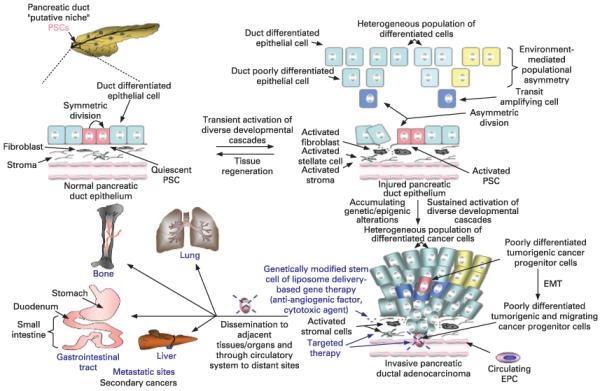Figure 2.

Proposed model of the molecular events associated with the pancreatic duct epithelium regeneration via putative adult pancreatic stem/progenitor cells (PSCs) after tissue injury and cancer initiation and progression through their malignant transformation. This scheme shows the asymmetric division of adult pancreatic duct stem/progenitor cells into transit-amplifying (TA)/intermediate cells expressing the epithelial, acinar and/or endocrine-like markers. In turn, TA cells may regenerate the bulk mass of further differentiated pancreatic epithelial cells within the exocrine compartment during pancreatic tissue repair after severe injury. Moreover, the possibility that TA cells may also give rise through environment-mediated populational asymmetry to the exocrine acinar and/or endocrine cell precursors is also indicated. The malignant transformation of putative pancreatic duct stem/progenitor cells into tumorigenic and migrating pancreatic cancer stem/progenitor cells, which may be induced through the sustained activation of distinct tumorigenic cascades such as hedgehog, epidermal growth factor receptor (EGFR) and wingless ligand (Wnt/β-catenin) during cancer progression, and more particularly during the epithelial–mesenchymal transition (EMT) programme is also illustrated. EPC, endothelial progenitor cell.
